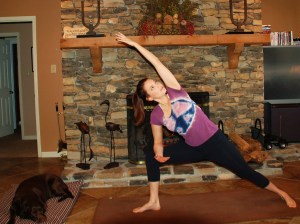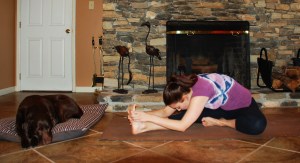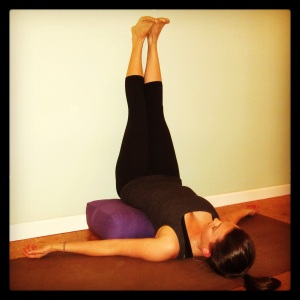Stuffy noses, coughs, and sneezes, oh my! I am very aware of cold season because the snot factor in my classroom increases exponentially. Sorry for that visual. So, I am being proactive this year! Yogi tea, healing soup, and neti-potting have already started at my house and I’m very hopeful that this year I won’t catch the kindergarten crud. Here are a few recipes to help warm your soul.
Step 1…
Yogi tea. This homemade tea straight from Yogi Bhajan himself will help boost your immune system and fight the winter crud. (Original recipe found on the Birmingham Yoga website.)
Ingredients…
- 1 gallon of water
- 30 cloves
- 30 black peppercorns
- 30 cardamom pods
- 5 cinnamon sticks
- 1 inch of ginger (or more) thinly sliced
- 1 tea bag of black tea (leave out if you are sensitive to caffeine or planning to drink at night)
- *Milk/almond milk or honey to add taste — Milk helps to ease the shock of the spices on the stomach and intestines so drink with milk if you’re sensitive.
Directions…
- Bring water to a boil
- Add all spices except the black tea bag. Boil 30-45 minutes. If you want a stronger brew boil longer and add more water as needed.
- At the end, add black tea bag and boil another 5 minutes. **The black tea is added last because it amalgamates the spices and seals them. Also the tannins help assimilate the spices into the body.
- Add milk and sweetener to an individual cup as you desire. This will allow you to store the raw tea in the fridge and prepare with milk and sweeteners as you like.
- If you go cup by cup, you can leave the raw tea on the stove on the lowest flame to enjoy all day.
Step 2…
Jala neti. Jala Neti is a nasal cleansing technique that rinses the sinuses with warm saline with the aid of a teapot-like vessel called a neti pot. It helps to lubricate and cleanse your nasal passages.
Ingredients…
- Distilled or previously boiled water
- non-iodized salt or over the counter mixtures (I use Neil-Med)
- Neti pot
Directions…
- Pour a cup of warm water (sterilized by boiling the water or purchasing distilled water)into a neti pot.
- Add 1/4 teaspoon of non-iodized salt (kosher or sea salt or I use over-the-counter mixtures that can be found in the pharmacy section of your grocery store), stirring until it dissolves.
- Insert the spout into your left nostril, lean over the sink, and tilt your head slightly to the right so the water flows through the sinus passages and out of the right nostril.
- Gently blow your nose and repeat on the other side.
Step 3…
Healing soup. Adapted from The Clean Eating Mama.
- 1 medium yellow onion, chopped
- 2 tbsp extra virgin olive oil
- 6 garlic cloves, minced
- 3 carrots, chopped
- 3 stalks of celery, chopped
- 1 red bell pepper, seeded and chopped
- 2 cups sweet potato or russet potato (about 1 large potato)
- salt and pepper to taste
- 4 cups water or vegetable broth
- handfuls of herbs on hand: basil, parsley, thyme (if using fresh, chop and add towards the end). I added dried herbs at the beginning and tasted throughout.
- any fresh vegetables on hand – I used the last little harvest of tomatoes and okra from our garden. What’s more healing than veggies grown in your own back yard?!
Directions…
- In a large heavy bottom pot (or dutch oven), heat on medium and add oil. Let the oil heat for a few minutes. Add copped onion, garlic, and a pinch of salt. Let cook down for a few minutes until onion is soft. Add remaining vegetables, dried herbs, salt and pepper and let cook down for about 10 minutes or so.
- Add liquid of choice (water or vegetable stock) and turn the heat up to high. Bring to a boil. Once it is boiling, reduce heat to medium/low and cover with lid. Stir occasionally. Let cook for an hour or so. You can always add more water if it becomes too thick. For this vegetable soup you want it to be rather brothy because this is where the where the healing magic is!
Happy Fall y’all!



































































